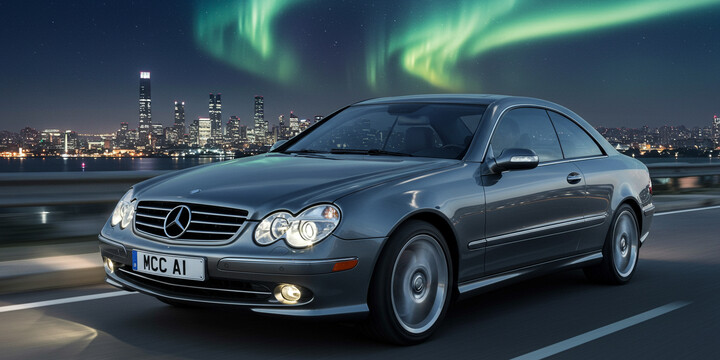
MERCEDES-BENZ CLK (2002-09) 200K 2DR COUPE 1.8 163 AVANTGARDE

average use

The most recent mileage data for the Mercedes-Benz CLK (2002-09) model reveals a diverse distribution of recorded mileages. Notably, a significant portion of vehicles—approximately 19.4%—have reported mileages between 90,000 and 100,000 miles, making it the most common mileage bracket. Additionally, the 120,000–130,000 mile range accounts for around 12.9%, while 130,000–140,000 miles is close behind at 9.7%. There are smaller but notable proportions of vehicles at both the lower end (0–10,000 miles at 3.2%) and higher end (180,000–190,000 miles at 3.2%, and 160,000–170,000 miles at 3.2%).
This suggests a wide range of usage histories among these vehicles, with many cars crossing the 100,000-mile mark, which is typical for vehicles of this age. The data indicates that while some cars are still low mileage, a significant number have accumulated considerable miles, reflecting varied ownership and usage patterns.

vehicle values

The private sale valuation data for the Mercedes-Benz CLK (2002-09) 200K 2DR Coupe 1.8 163 AVANTGARDE indicates that the majority of these vehicles are priced between £1,000 and £2,000, accounting for approximately 80.6% of private sales. Additionally, around 12.9% of sales are situated below £1,000, suggesting a significant portion of vehicles fall into very low-price ranges, potentially indicative of higher mileage or condition issues. A smaller segment, about 6.5%, is listed between £2,000 and £3,000. Overall, the data reflects that this model typically commands relatively low private sale prices, likely owing to its age, mileage, and market demand factors.

production years

The data on the year of manufacture for the Mercedes-Benz CLK (2002-09) 200K 2DR Coupe 1.8 163 Avantgarde indicates that the majority of vehicles in this sample were produced between 2003 and 2005, accounting for approximately 80.8% of the vehicles. Specifically, 41.9% were manufactured in 2003, 35.5% in 2004, and 19.4% in 2005. A smaller proportion, about 3.2%, were made in 2002, suggesting that most of these vehicles are from the early to mid-2000s. This distribution implies that the model’s popularity or availability is highest within this age range, possibly reflecting its market demand during those years.

colour popularity

The data for the Mercedes-Benz CLK (2002-09) 200K 2DR Coupe 1.8 163 AVANTGARDE indicates that silver is the most common main paint colour, accounting for approximately 38.7% of vehicles. Black and blue are equally prevalent, each representing 29% of the sample, while red is relatively rare at just 3.2%. This suggests that silver is a popular and perhaps classic choice for this model, with black and blue also being common, whereas red is much less frequently seen.

ownership cycle

The data indicates that the majority of the Mercedes-Benz CLK (2002-09) 200K 2DR Coupe 1.8 163 AVANTGARDE vehicles have had a moderate number of previous registered keepers. Specifically, the largest proportion (25.8%) has had five previous keepers, followed by 16.1% with three previous keepers, and 12.9% with four. Notably, a smaller but significant percentage (9.7%) each have only one or two previous keepers, suggesting some vehicles may have been relatively well maintained or kept by a single owner. The presence of vehicles with up to 12 previous registered keepers (3.2%) indicates some units have had quite a few owners, which could be a point of consideration regarding their maintenance history or usage. Overall, most of these vehicles appear to have experienced between one and five owners, which is typical for vehicles of this age.

engine choices

The data indicates that all Mercedes-Benz CLK (2002-09) 200K 2DR Coupe 1.8 163 Avantgarde models in the sample are equipped with a 1.8-liter petrol engine. There is a 100% prevalence of this engine capacity and fuel type among the vehicles analyzed, suggesting consistency in specifications across the model range during that period.












